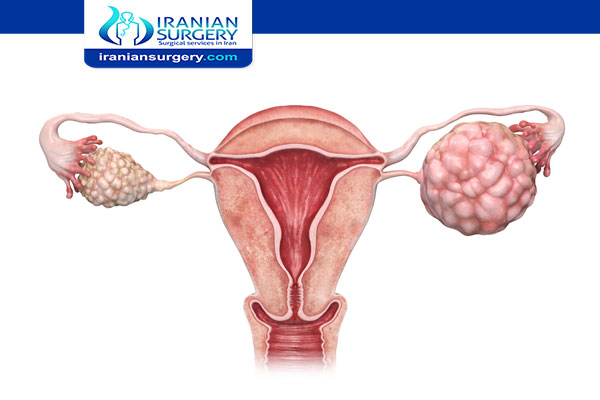Can you survive stage 3 ovarian cancer?
What are the stages of ovarian cancer?
Your doctor determines the stage based on how far the cancer has spread. There are four stages, and each stage has substages:
Stage 1
Stage 1 ovarian cancer has three substages:
. Stage 1A.The cancer is limited, or localized, to one ovary.
. Stage 1B. The cancer is in both ovaries.
. Stage 1C. There are also cancer cells on the outside of the ovary.
Stage 2
In stage 2, the tumor has spread to other pelvic structures. It has two substages:
. Stage 2A. The cancer has spread to the uterus or fallopian tubes.
. Stage 2B. The cancer has spread to the bladder or rectum.
Stage 3
Stage 3 ovarian cancer has three sub-stages:
. Stage 3A. The cancer has spread microscopically beyond the pelvis to the lining of the abdomen and the lymph nodes in the abdomen.
. Stage 3B. The cancer cells have spread beyond the pelvis to the lining of the abdomen and are visible to naked eye but measure less than 2 cm.
. Stage 3C. Deposits of cancer at least 3/4 of an inch are seen on the abdomen or outside the spleen or liver. However, the cancer isn’t inside the spleen or liver.
Stage 4
In stage 4, the tumor has metastasized, or spread, beyond the pelvis, abdomen, and lymph nodes to the liver or lungs. There are two substages in stage 4:
. In stage 4A, the cancerous cells are in the fluid around the lungs.
. In stage 4B, the most advanced stage, the cells have reached the inside of the spleen or liver or even other distant organs like the skin or brain.
Read more about : What are the early warning signs of ovarian cancer?
Read more about : How to burst a bartholin cyst at home?
Read more about : Colorectal cancer surgery
Read more about : Anal Cancer Treatment
Read more about : Bone cancer stage
About Iranian Surgery
Iranian surgery is an online medical tourism platform where you can find the best Surgeons to treat your ovarian cancer in Iran. The price of treating an ovarian cancer in Iran can vary according to each individual’s case and will be determined by the type of ovarian cancer treatment you undergo and an in-person assessment with the doctor. So if you are looking for the cost of ovarian cancer treatment in Iran, you can contact us and get free consultation from Iranian surgery.

Types of ovarian cancer
. Epithelial carcinoma of the ovary
Epithelial cell carcinoma is the most common type of ovarian cancer. It makes up 85 to 89 percent of ovarian cancers. It’s also the fourth most common cause of cancer death in women.
This type often doesn’t have symptoms in the early stages. Most people aren’t diagnosed until they’re in the advanced stages of the disease.
Genetic factors
This type of ovarian cancer can run in families and is more common in women who have a family history of:
. Ovarian cancer and breast cancer
. Ovarian cancer without breast cancer
. Ovarian cancer and colon cancer
Women who have two or more first-degree relatives, such as a parent, sibling, or child, with ovarian cancer are at the highest risk. However, having even one first-degree relative with ovarian cancer increases the risk. The “breast cancer genes” BRCA1 and BRCA2 are also associated with ovarian cancer risk.
Read more about : Brain Cancer Treatment
Read more about : Oral Cancer Treatment
Factors that are linked to increased survival
Several factors are linked to increased survival in women who have epithelial carcinoma of the ovary:
. Receiving a diagnosis at an earlier stage
. Being a younger age
. Having a well-differentiated tumor, or cancer cells that still closely resemble healthy cells.
. Having a smaller tumor at the time of removal
. Having a cancer caused by BRCA1 and BRCA2 genes
. Germ cell cancer of the ovary
“Germ cell cancer of the ovary” is a name that describes several different types of cancer. These cancers develop from the cells that create eggs. They usually occur in young women and adolescents and are most common in women in their 20s.
These cancers can be large, and they tend to grow quickly. Sometimes, tumors produce human chorionic gonadotropin (HCG). This can cause a false-positive pregnancy test.
Germ cell cancers are often very treatable. Surgery is the first-line treatment. Chemotherapy after the surgery is highly recommended.
. Stromal cell cancer of the ovary
Stromal cell cancers develop from the cells of the ovaries. Some of these cells also produce ovarian hormones including estrogen, progesterone, and testosterone.
Stromal cell cancers of the ovaries are rare and grow slowly. They secrete estrogen and testosterone. Excess testosterone can cause acne and facial hair growth. Too much estrogen can cause uterine bleeding. These symptoms can be quite noticeable.
This makes stromal cell cancer more likely to be diagnosed at an early stage. People who have stromal cell cancer often have a good outlook. This type of cancer is usually managed with surgery.


